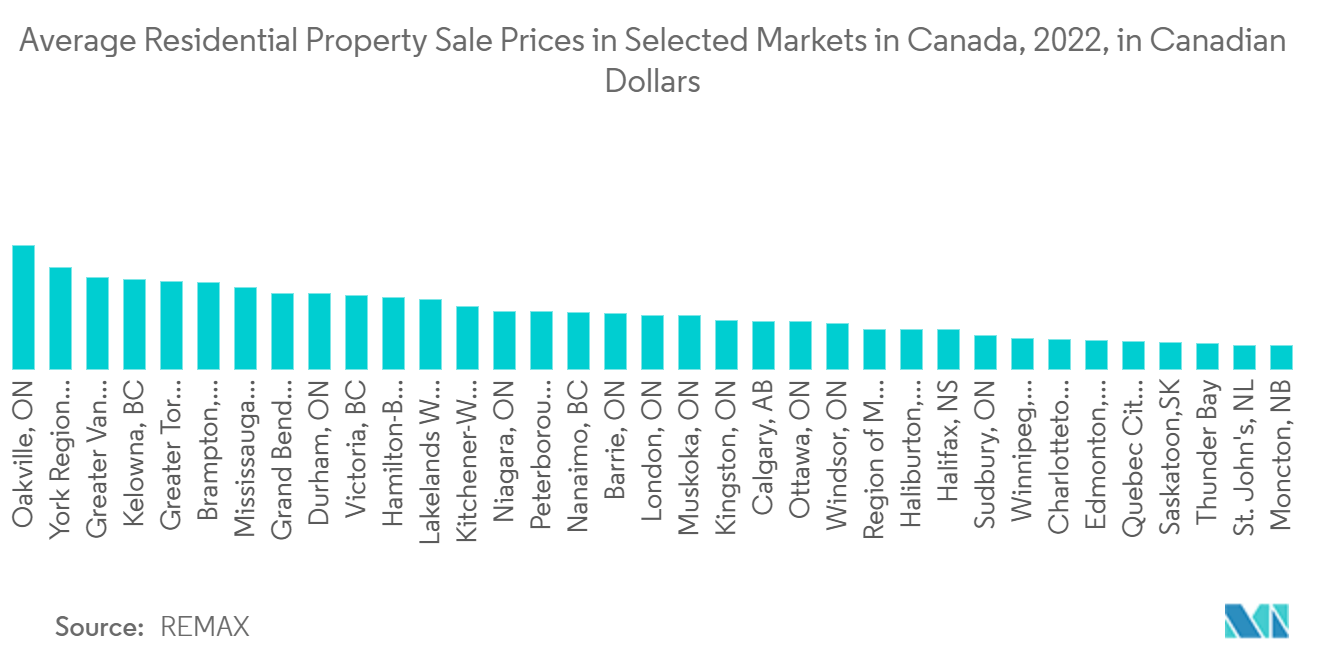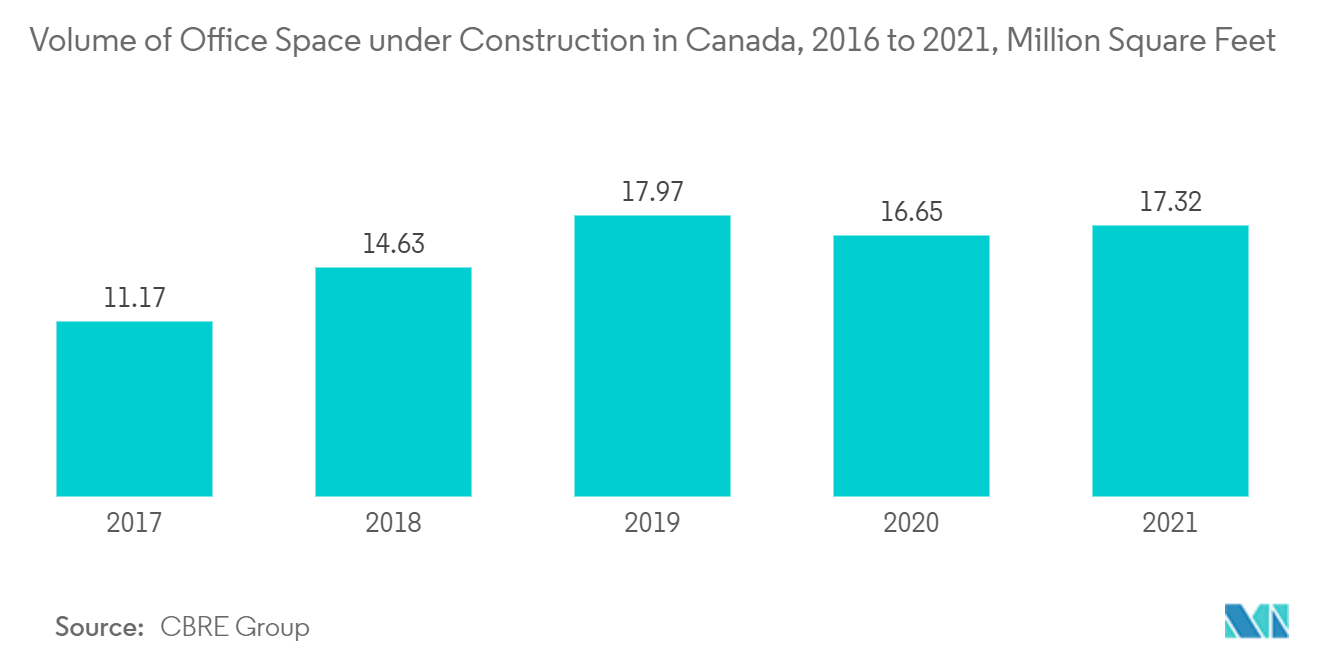Market Trends of Canada Facade Industry
This section covers the major market trends shaping the Canada Facade Market according to our research experts:
Increasing Technological Development in Construction Industry
Because buildings can produce up to 33% of global carbon emissions, architects are working to create intelligent and energy-efficient façades. The majority of energy transfer (heat/cold) occurs through a façade, which acts as a "barrier" between customary spaces and the exterior environment. Sustainable smart façades should meet the most crucial requirements for material and energy efficiency, i.e., they should use or release the least amount of energy to ensure interior comfort. Using "Biomimetic Façades" or "Biomimicry," or replicating nature and applying it to design, architects are now utilizing the laws of nature to build intelligent façades.
It is stated that inspiration may be found anywhere, and architects have produced works of art using inspiration from things like honeycombs, living things, and human skin. The three design factors that affect the thermal and aesthetic comfort of biomimetic smart façades are air/wind, shade, and climate. In addition to these, an energy-efficient façade should take into account things like solar radiation, wind speed, and humidity. A program called BioTRIZ transforms biological data analysis into technological data analysis to assist designers in incorporating nature into their work. Using this information, architects created a honeycomb-inspired roofing system that significantly reduced heat transmission by enabling longer wave radiations to travel through the open pores of the comb vertically and lowering the surface temperature.

Increasing Inclination towards Sustainability
Builders and end users alike are increasingly aware that a building's façade-no matter how opulent or modest-is about more than just aesthetics. Functionality is required to complement a stunning appearance or awe-inspiring design, including energy efficiency, insulation capabilities, strength and stability, durability, ease of installation and maintenance, competitive cost, and resistance to chemicals, fire, dampness, pests, etc. Even while there is still a market for classic façade building materials like bricks, stones, and wood, newer materials like composites made of ceramic, vinyl, and fiber cement are quickly gaining favor. Fresh technologies and materials are continuously being tested, and the market is receptive to new advances.
The UN Environment Program estimates that annually, buildings and their construction account for roughly 36% of all energy used worldwide and around 40% of all greenhouse gas emissions. For instance, Pelli Clarke Pelli Architects, Inc. (PCPA) has spent the last 30 years using stainless steel in building façades. Additionally, appropriate fabrication materials are frequently employed for structures in corrosive environments or architecturally exposed structural steel applications, such as nickel-containing stainless steel that offers low heat conductivity.
Several important players are using clever strategies, such as adding curtain walls and functional façades that have a good influence on energy efficiency and have strong resistance to weather, heat, noise, light, and glare. The market for modern façades is expanding due to their inherent qualities and growing environmental and energy-related concerns throughout the world.

